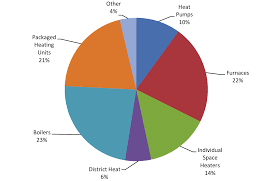This article will explore the environmental impacts of using solar power. It is intended to educate readers about the environmental risks related to solar energy and ways to reduce its negative effects. Additionally, it will discuss the different chemicals used in the production of solar panels. There are various approaches available to lessen the environmental impact of solar energy, such as using glass or polymer-based solar panels, as mentioned in various methods to improve the environmental friendliness of solar energy.

Solar power’s impact
Solar power projects often require clearing large areas of land, and the resulting construction can be highly damaging to the environment. This can result in soil compaction, alteration of drainage channels, and increased runoff and erosion. These impacts can be mitigated with engineering solutions. The effects of large solar facilities on native wildlife and vegetation can also be detrimental. These impacts could include habitat loss, disturbances to rainfall patterns, and direct contact, which can lead to injury or death.
The energy produced by solar panels is dilute and unreliable, so they can not be used as a primary energy source. Due to their low power density, they also have high physical costs. In recent years, solar panels’ costs have fallen. However, proper recycling can reduce the environmental impact of these energy systems.
Solar thermal plants are often found in areas with fragile habitats and unique soil conditions. This can negatively impact local wildlife. One study found that solar thermal plants could threaten the habitat of the desert tortoise (a species with special status). It also highlighted the need for extensive mitigation efforts.
The solar industry produces vast quantities of waste, and this is already higher than other types of electronics. While the solar industry claims that it only degrades solar panels at a rate of 0.5% per year, these panels have the potential to cause hundreds of millions of tons of waste. This waste is an unsustainable burden on the environment and is not sustainable.
Environmental risks
Large-scale solar power projects can pose significant environmental risks, including land degradation and the loss of wildlife habitats. These projects often require the construction transmission lines that can disrupt wildlife habitats. These projects can also lead to loss of biodiversity and displacement of native communities. Archbold and Lathrop state that solar power facilities require several acres to produce a megawatt of electricity.
To measure the carbon emissions from solar energy, studies have been done. According to a recent report published in the journal Nature Energy, solar panels emit six grams of carbon dioxide per kilowatt-hour. This is significantly lower than the emissions of coal, wind energy, or bioenergy. Therefore, solar power has a much lower carbon footprint than conventional power sources.
A significant amount of water is also required for solar energy power plants. These facilities consume 600 to 650 gallons depending on the cooling system used. This can put a lot of stress on water resources. Chemical spillages from solar power plants can also contaminate groundwater or surface waters.
PV cells also contain hazardous materials. They are sealed under normal operating conditions but can be damaged or decommissioned, which can lead to environmental contamination. Some concentrated solar power systems may use coolants, hydraulic fluids, or lubricants that could be dangerous to the environment. Proper planning and maintenance of solar power systems can minimize these risks.
There are many ways to reduce the environmental impact
There are many ways to reduce the environmental impact solar panels have. One of the most important ways is to choose a site that does not share its land with agricultural uses. Large solar facilities require extensive clearing and grading, which can alter drainage channels. These facilities also increase runoff which can lead to erosion. In these cases, there are ways to minimize the impact through engineering. Furthermore, solar facilities can pose air quality issues, as they may produce chemicals that are harmful to the environment.
Solar panels are often made from toxic materials. Commonly, lead and calcium are used. These materials can leach into the environment so it is important to properly recycle them. Some solar farms also require workers to clear vast areas of land, which can have adverse effects on local ecosystems.
The pollution from large solar farms is especially severe. The resulting dust can have a negative effect on nearby areas, such as wilderness areas or national parks. As a result, these solar facilities may disturb habitats or even displace animals from their homes. Moreover, solar panels require significant amounts of energy to manufacture and process their components.
There are many ways to reduce the environmental impact of solar panels. One way is to change the manufacturing process. This can reduce carbon emissions from the manufacturing process. Changes in the manufacturing process of solar panels could result in a decrease in carbon dioxide emissions. This is a significant step towards reducing the environmental impact solar panels.
Chemicals used to make solar panels
The chemicals used in solar panels are dangerous to the environment, plants, and humans. These chemicals leach into the groundwater. Lead and cadmium are particularly harmful, affecting the brain development of children. Other chemicals can cause cancer in animals and cause damage to the environment. Fortunately, some manufacturers are making the transition to more environmentally friendly chemicals.
During manufacturing and disposal, toxic chemicals in solar panels can be released into the environment. These chemicals include lead, cadmium telluride, copper indium selenide, and silicon tetrachloride, which can harm both people and the environment.
The production process for solar panels produces huge amounts of greenhouse gases. This is because silicon, a mineral that has been mined and heated, is the primary material used in solar panels. During this process, carbon dioxide as well as sulfur dioxide are released. While this is not a problem during normal operation, it can be a problem during disposal.
Although some manufacturers are making efforts to recycle solar panels they are not common. Recycling can be difficult when new technologies are being used. For example, E-waste (electronic waste) has become a major problem since the rise in the use of electrical devices. Solar panel recycling may not become as simple as we think until technology improves.
Some solar panels emit nitrogen trifluoride which is 17,000 times more powerful than carbon dioxide. Although manufacturers attempt to limit the release of nitrogen trifluoride, it still leaks out during production. A similar problem has been noted for sulfur hexafluoride, a gas which is 22,800 times more potent than CO2.
Placement of solar panels into landfills
Solar panels contain toxic materials that can leach into groundwater and cause pollution. The EPA requires that such products are safely disposed of. It is not clear if these modules are properly disposed of. Some landfills don’t even have proper linings. This may lead to problems such as soil compaction and increased surface runoff. However, solar panels placed in landfills are bad for the environment.
There are many promising initiatives to help the environment. International Energy Agency’s Photovoltaics Power Systems Program will release a study on solar panels and their potential to be recycled. The study is expected to find that solar panels can be recycled and are not as hazardous as wind turbine blades.
The US EPA is currently investigating the feasibility and operation of solar landfills. Such projects could convert old municipal landfills into solar energy powerhouses. They could power 49% of American homes without rooftop solar panels and reduce carbon emissions. The United States alone has more than 10,000 old municipal landfills. The EPA has a long-term goal of using these abandoned sites for solar energy projects.
The dumping of solar panels that are not in use is not only harmful to the environment but also costly. It is very costly to recycle these panels. It takes ten to thirty times more resources than simply disposing them in landfills.
Recycling solar panels
A French startup is trying to change the situation, even though the cost of solar panel recycling can be prohibitively expensive. The company was founded in 2017 and plans to build a Grenoble solar panel recycling plant by 2022. The company has partnered with a trade association in France, Soren, and a logistics firm Envie 2E Aquitaine to develop a process that will take discarded solar panels. The company will separate the glass from its aluminum frame and transport the panels to France.
However, the process of recycling solar panels is costly and a major concern for the environment. The majority of processing costs are borne by labor costs. Even if the technology was more efficient, it would still prove prohibitively expensive. According to the National Renewable Energy Laboratory, the cost of recycling a single panel ranges between $20 to $30.
In recent years, technology has improved greatly in recycling solar panels. It is now possible recycle 90% of a solar panel. Most materials can be recycled into new solar cells. Veolia, a French company that deals with waste, opened the first European facility for the recycling of solar cell. However, companies must still be persuaded to use these methods.
Many solar panels are not recyclable and end up in landfills, contaminating groundwater with heavy metals. Recycling solar panels can be difficult and expensive due to a lack of regulations and oversight. In developing countries, it is possible that there are not enough regulations or infrastructure to properly dispose of solar panels.
Hi, I’m Emma. I’m the Editor in Chief of Tiny House 43, a blog all about tiny houses. While tree houses are often associated with childhood, they can be the perfect adult retreat. They offer a cozy space to relax and unwind, surrounded by nature. And since they’re typically built on stilts or raised platforms, they offer stunning views that traditional homes simply can’t match. If you’re looking for a unique and romantic getaway, a tree house tiny house might just be the perfect option.










